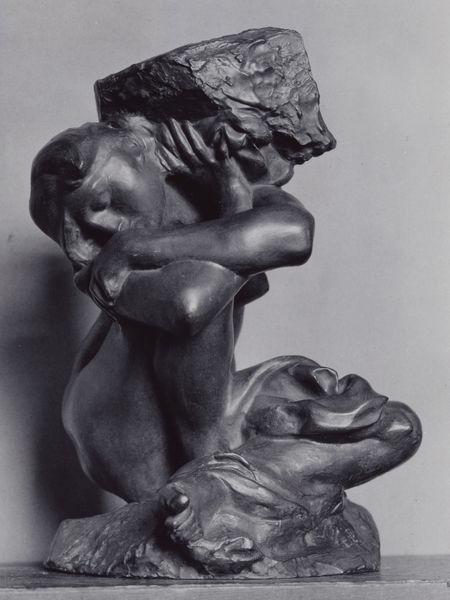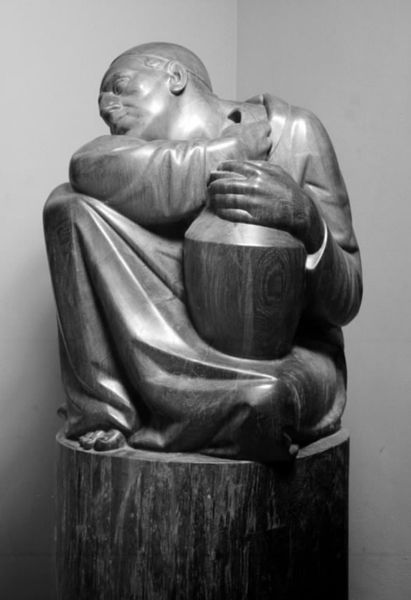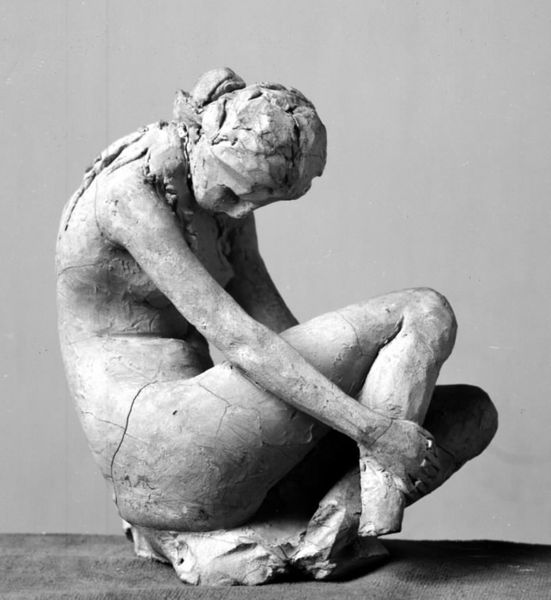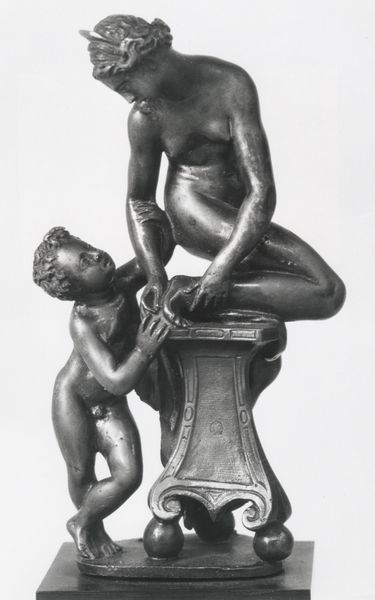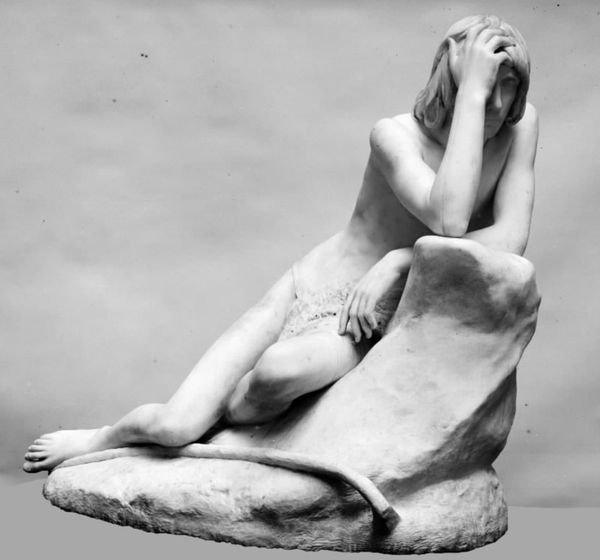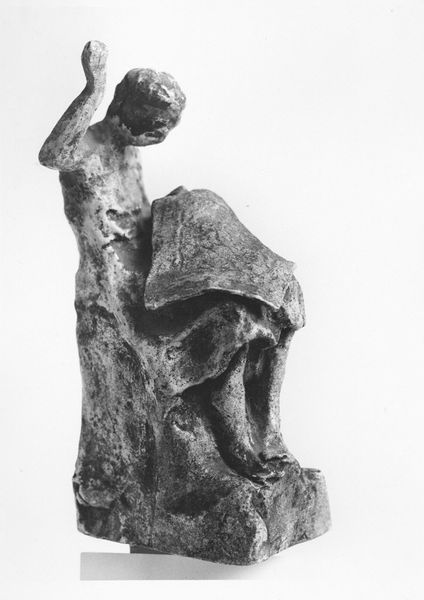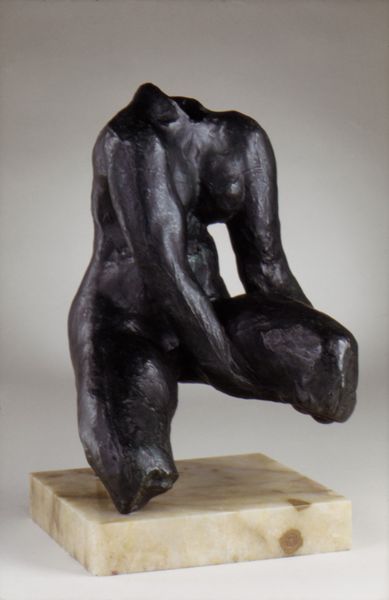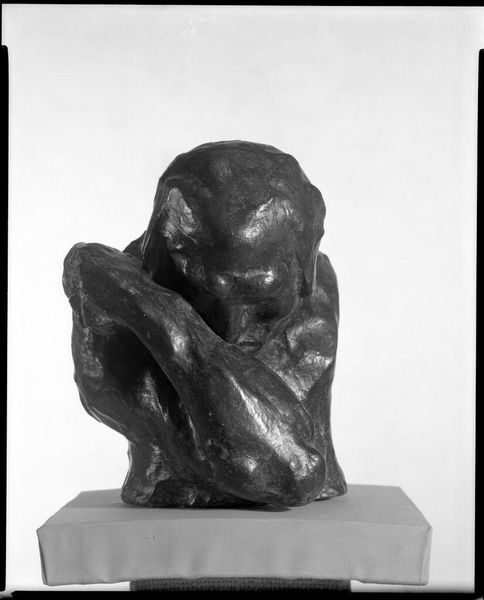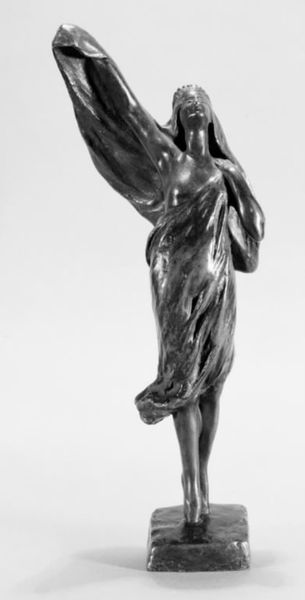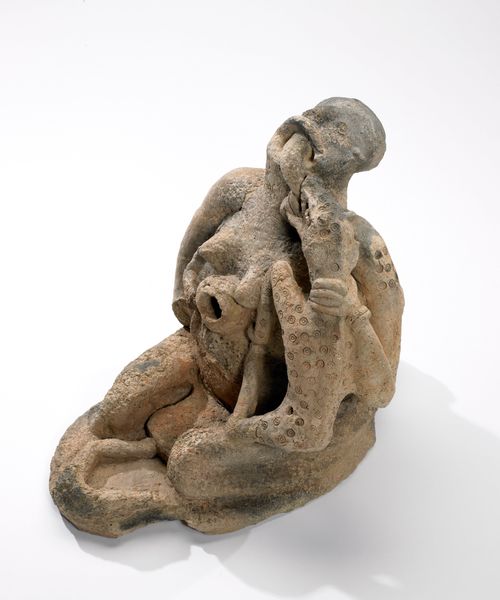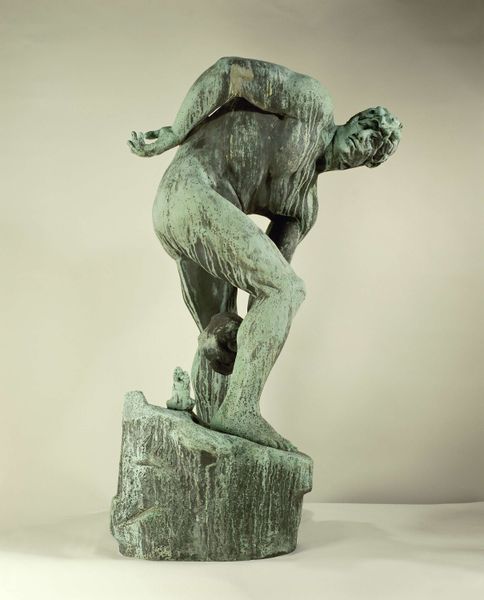
bronze, sculpture
#
organic
#
sculpture
#
bronze
#
figuration
#
sculpture
#
modernism
#
statue
Dimensions: 11.5 cm (height) x 9 cm (width) x 6.5 cm (depth) (Netto)
Curator: This bronze sculpture, "Loving Children of the Sea with a Conch," created by Svend Rathsack between 1917 and 1921, immediately strikes me with its use of contrasting materials. The rough bronze juxtaposed with the smooth, natural form of the conch. What is your initial reaction to it? Editor: I notice the tension between the industrial look of the bronze and the organic shape of the shell. How does this choice of material speak to the sculpture's cultural context? Curator: Consider the historical moment. Early 20th century was a period of rapid industrialization, yes? Rathsack utilizes the language of bronze casting – a technique reliant on industrial processes and labor – to depict an idealized image of nature and childhood innocence. Do you think it is successful? Is the juxtaposition harmonious or contradictory? Editor: That's interesting. I see the contradiction now; perhaps it reveals a tension between an increasingly mechanized world and a yearning for a simpler, more natural existence? The work presents a very idealistic and sheltered image. Curator: Precisely. This yearning might reflect the social anxieties of the time. Notice also the labor involved: the mining of the metal, the casting process itself. It brings up the question of how our understanding and appreciation of art might shift if we focus on its means of production rather than only on the finished product as aesthetic object. It prompts us to consider how Rathsack is using that relationship. The sculpture then becomes a comment on labor, value, and industrial progress. Thoughts? Editor: I had not considered how the process of making this piece is so embedded in our cultural understanding of it. This is a fresh view of materiality as a historical signifier of art! Thank you.
Comments
No comments
Be the first to comment and join the conversation on the ultimate creative platform.
